Post Pop: Saatchi Gallery’s latest show reflects on what happened after Warhol

An artist from China or Russia in the years following Glasnost and economic reform wouldn't have had much in common with his counterpart in the UK or US. Certainly the ideological links between those nations would have been tenuous at best. What they did share was a keen awareness of the imagery that besieged them - from bookshops, billboards and buildings of church and state - and the pop artists who exploited it.
In the East, people whose lives were strongly dictated were suddenly expected to think for themselves. Meanwhile in the West, people long expected to think for themselves were being told what to do and think. The disillusionment felt by artists coming of age at that time spawned a legacy of highly charged late-pop art.
That work is the subject of a far-reaching exhibition opened this week at London's Saatchi Gallery. Assembled by curators representing Russia, China and Taiwan, as well as the UK and US, 'Post Pop: East Meets West' features 250 works from three decades following the heyday of pop art.
It opens with a false sense of serenity in the monochrome 'Habitat' section, dominated by Ai Weiwei's 'Sofa in White', a replica of the standard-issue Chinese tufted armchair cast in marble, denying the comfort it's meant to offer. Bill Woodrow's 'Hoover Breakdown' references the mood of the modern housewife with a scattering of vacuum parts headed for the fan of a larger model. Richard Woods' recent 'Nature Making' portrays the act of destroying trees in the name of 'natural' furniture. Mounted on a whitewashed brick wall is Rachel Whiteread's 'Untitled (Black Books)', painted over in matt black so that nothing can be learned from it - least of all about the owner.
Soon enough, however, the bleeps of a Mao Zedong-themed video game crescendo and the branding appears: Jeff Koons' Spalding basketballs; Tom Sachs' 'Nutsy's McDonald's', assembled with visible nuts and bolts, including instructions on how to cook a 'prefab' meal. Alexander Kosolapov, luminary of Russia's sots art, or Soviet pop art, movement, presents a trinity of faceless Madonnas upstaged by a grid of caviar labels.
You'd think a generation of artists raised in the relative absence of religion would have escaped the pull of iconography. But therein lies the conflict in 'Ideology & Religion', perhaps the show's strongest section. If you're not scared straight by 'Die Harder', a screaming steel crucifix spiked with coat hangers by Turner Prize-nominee David Mach, you will be by the 12 shrouded figures worshipping at the altar of carved-wood toast slices by Anatoly Osmolovsky.
Further up the building the art goes increasingly meta, reproducing genres as disparate as classical Greek sculpture, English romantic, even pop art. After the umpteenth Warhol nod, the homage begins to wear thin - as does the line between the gallery proper and the second-floor gift shop. Perhaps this is the desired effect. At this time of year, does it matter?
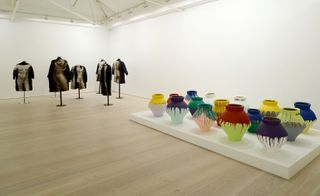
The highly charged works have been assembled by curators representing Russia, China and Taiwan, as well as the UK and US, demonstrating the far-reach of this pivotal art movement. Pictured are 'Friends and Neighbours' (left), by Irina Nakhova, 1994, and 'Coloured Vases', by Ai Weiwei, 2007-10
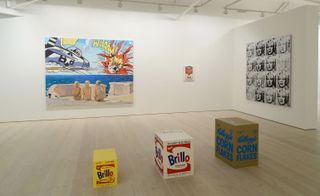
The exhibition is split into six themes: 'Habitat'; 'Advertising and Consumerism'; 'Celebrity and Mass Media'; 'Art History' (pictured); 'Religion and Ideology'; and 'Sex and the Body'

Richard Woods' recent 'Nature Making' portrays the act of destroying trees in the name of 'natural' furniture
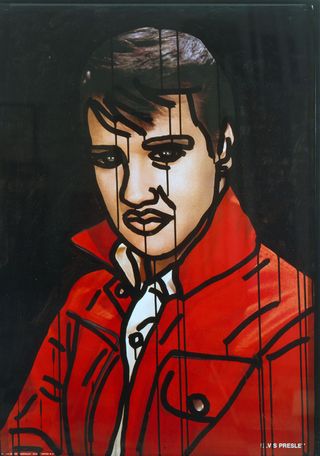
'Elvis Presley', by Keith Haring, 1981. © Keith Haring Foundation

'Great Criticism: Benetton', by Wang Guangyi, 1992. © The artist
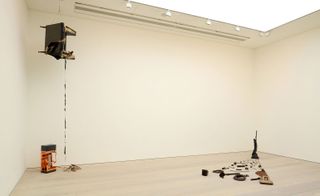
Bill Woodrow's 'Hoover Breakdown', 1979, references the mood of the modern housewife with a scattering of vacuum parts headed for the fan of a larger model
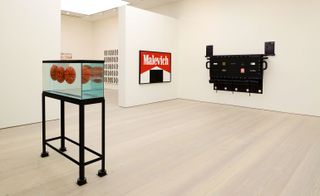
The packaging and branding synonymous with pop art is represented through Jeff Koons' 'Three Ball Total Equilibrium Tank' and Alexander Kosolapov's 1987 work 'Malevich - Black Square'

'Encased - Three Rows', by Jeff Koons, 1983-1993/98. © The artist
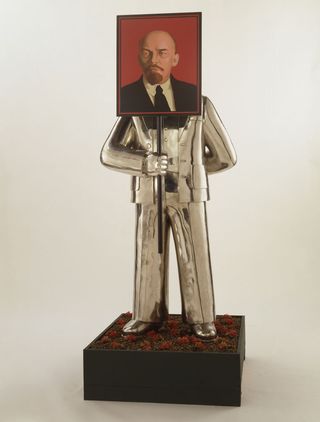
'Man with Portrait of Lenin', by Grisha Bruskin, 1990, from the series 'Paradise Lost'. © The artist
ADDRESS
Saatchi Gallery
Duke of York's HQ
King's Road
London SW3 4RY
Wallpaper* Newsletter
Receive our daily digest of inspiration, escapism and design stories from around the world direct to your inbox
-
 Pininfarina Battista Reversario is a new one-off electric hypercar
Pininfarina Battista Reversario is a new one-off electric hypercarThe all-electric Pininfarina Battista Reversario is joining its aesthetic inverse in an ultra-select car collector’s garage. We take a look at a car built to a very precise order
By Jonathan Bell Published
-
 Fernando Jorge’s fluid diamond earrings show his curve appeal
Fernando Jorge’s fluid diamond earrings show his curve appealDiscover Brazilian jewellery designer Fernando Jorge's snake-like silhouettes and graphic shapes
By Hannah Silver Published
-
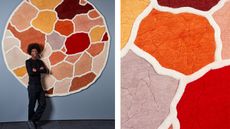 Abreham Brioschi debuts Ethiopia-inspired rugs for Nodus
Abreham Brioschi debuts Ethiopia-inspired rugs for NodusAbreham Brioschi teams up with luxury rug experts Nodus to translate visions from his heritage into a tactile reality
By Ifeoluwa Adedeji Published
-
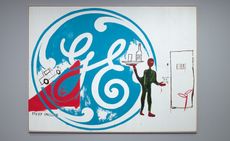 Jean-Michel Basquiat and Andy Warhol’s fruitful partnership explored in Paris
Jean-Michel Basquiat and Andy Warhol’s fruitful partnership explored in ParisFondation Louis Vuitton presents ‘Basquiat x Warhol. Painting 4 Hands’, exploring the collaboration between the two artists
By Hannah Silver Last updated
-
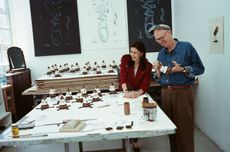 The dynamic duet of Claes Oldenburg and Coosje van Bruggen
The dynamic duet of Claes Oldenburg and Coosje van BruggenRemembering Claes Oldenburg, who died aged 93 on 18 July 2022, we revisit our 2021 article celebrating his partnership with Coosje van Bruggen, as the duo’s final work together, Dropped Bouquet, was realised and exhibited at Pace New York’s ‘Claes & Coosje: A Duet’
By Harriet Lloyd-Smith Last updated
-
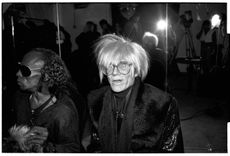 The Andy Warhol Diaries on Netflix reveals his enduring impact on contemporary art
The Andy Warhol Diaries on Netflix reveals his enduring impact on contemporary artWe review the new documentary, and showcase Warhol’s impact on modern culture through three artists: Deborah Kass, Jeff Koons and Glenn Ligon
By Harriet Lloyd-Smith Published
-
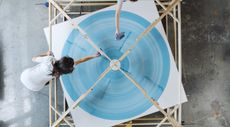 Low-tech to high art: Isabel + Helen ‘In Orbit’ at Saatchi Gallery
Low-tech to high art: Isabel + Helen ‘In Orbit’ at Saatchi GalleryDown-to-earth creators with unearthly ideas: London-based creative duo Isabel + Helen present a new series of hypnotic paintings created using hand-assembled contraptions
By Harriet Lloyd-Smith Last updated
-
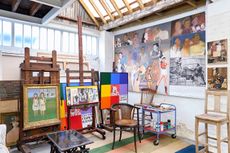 Inside pop art star Peter Blake's studio of curiosities
Inside pop art star Peter Blake's studio of curiositiesA new monograph and exhibition explore the fantastical life, work and studio of British pop art’s ‘godfather’ Peter Blake
By Harriet Lloyd-Smith Last updated
-
 London calling: Start art fair at Saatchi Gallery focuses on cultural diversity and emerging talent
London calling: Start art fair at Saatchi Gallery focuses on cultural diversity and emerging talentBy Elly Parsons Last updated
-
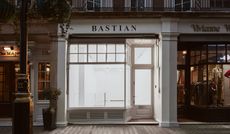 David Chipperfield Architects completes new Mayfair art gallery
David Chipperfield Architects completes new Mayfair art galleryBerlin-based Bastian inaugurates its first international outpost with an exhibition of Andy Warhol’s Polaroids
By Jessica Klingelfuss Last updated
-
 Over 100,000 unseen Andy Warhol photographs to be made public
Over 100,000 unseen Andy Warhol photographs to be made publicBy Jessica Klingelfuss Last updated